Healing Through Connections: The Latest in Spinal Cord Injury Research
By Christina Hernandez Sherwood
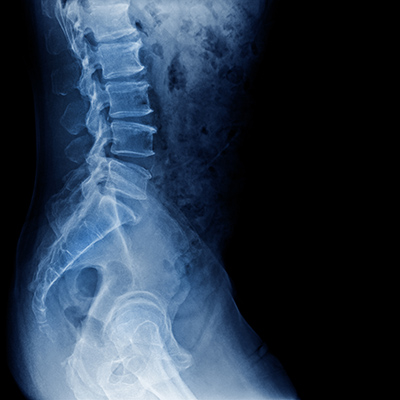
It’s been more than a quarter-century since a small group of faculty members at the Medical College of Pennsylvania — now Drexel University College of Medicine — built the first institution in the mid-Atlantic dedicated to spinal cord injury research. “[The founders] created a culture of excitement and drive to find new discoveries and celebrate the work that everybody was doing,” says Michele Basso, PhD. “I still try to think that way.”
Today, hundreds of College of Medicine graduates who studied at the Marion Murray Spinal Cord Research Center (co-founder Murray’s name was added to the center’s title after her 2018 passing) have fanned out around the globe. “In a small subfield of neuroscience, [the center] has a lot of important impact,” says Nicholas Au Yong, MD, PhD neuroscience ’11. “It was a special place to grow up.”
These innovators have charted their own paths in the field of spinal cord injury research and treatment, but each has taken a piece of the center along with them. Here are four of their stories, and a look at what’s new in this important field.
The Double Threat
Nicholas Au Yong, a neurosurgeon who specializes in the restoration of function after spinal cord injury, splits his time between bench and bedside. It’s not always an easy balance. “There are economic pressures to be a full-time neurosurgeon,” says Au Yong, who has practiced at Emory Healthcare in Atlanta since 2018. “You need a lot of support and investment to allow you to not have a full-time clinical practice.”
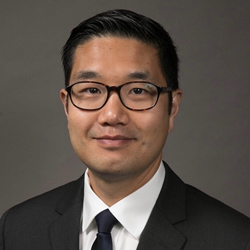
Growing up in a small town in the Poconos as the son of restaurant owners, Au Yong knew he wanted to be a physician-scientist. To that end, he completed Drexel’s MD/PhD program, exploring how spinal cord neurons work together to generate walking behavior with his mentor Michel Lemay, PhD, who is now a professor and interim chair of bioengineering at Temple University College of Engineering and an adjunct professor of neurobiology and anatomy at Drexel. Today Au Yong relishes the chance to bring his perspective as a clinician to the lab while also speaking the same language as his fellow researchers. Au Yong chose to specialize in the neurophysiology of the spinal cord because, he says, despite its huge implications on quality of life, the spinal cord is often overlooked in neuroscience in favor of the brain.
“It’s a combination of the unknown, or the great extent that we still have to learn about spinal cord biology,” Au Yong says, “and the importance and relevance in clinical medicine, that attracts me to spinal cord injury.”In his lab, Au Yong explores the sympathetic nervous system, and how it affects the neuromuscular junction after spinal cord injury. Specifically, his focus is the new technique of sympathetic innervation of the diaphragm in high cervical tetraplegia patients. His aim? Restore enough function to eventually get these patients, whose injuries high in the spinal cord render them paralyzed from the neck down, off ventilators.
An injured nerve takes a long time to grow — it can only manage about a millimeter a day. But if the musclethe nerve is trying to reach atrophies before the nerve regrows, there is no hope for the patient to recover this lost connection. So, Au Yong’s lab is trying to keep this muscle-nerve interface intact by stimulating the muscle. This will prevent the muscle from atrophying while it waits for the nerve to regrow, thereby expanding the therapeutic window and giving more time for clinical interventions. It allows for options that were previously disregarded because of the narrow time window.
At the same time, Au Yong’s lab is working to amplify the weakened motor signal between the muscle and the nerve. This could give a patient enough force to get off a respirator or have a better cough reflex, or even protect the airway from infection, he says.
The work hasn’t reached the clinic yet, but Au Yong is optimistic. “The hope is that we can, if it works, try something like that in the future,” he says.
The Questioner
Angelo Lepore, who earned his PhD in neuroscience at Drexel in 2006, approaches spinal cord injury treatment by beginning at, well, the beginning. “If we understand what is causing the damage to the nervous system on a very detailed biological level, then we can try to intervene by specifically targeting those things,” says Lepore, director of the Neuroscience graduate program and professor of neuroscience at the Sidney Kimmel Medical College at Thomas Jefferson University. “Each therapy would potentially be directed against a very specific gene or protein.”
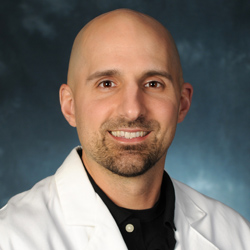
Lepore’s lab is among those that have made major progress in understanding the pathogenesis of spinal cord injury by studying animal models. Now, the team is poised to take the next step: using cell transplantation therapy to target spinal cord injury–induced respiratory dysfunction, says Lepore, who completed his PhD research in the lab of Itzhak Fischer, PhD, professor and chair of neurobiology and anatomy at Drexel.
While most spinal cord injury researchers study the use of cell transplantation to replace neurons, Lepore’s lab instead focuses on replacing astrocytes. Astrocytes, among the principal cells of the nervous system, often die or become significantly compromised when the spinal cord is injured. Lepore and his team found that targeting astrocytes alone for cell transplantation can have a significant impact on an animal’s ability to breathe after a spinal cord injury. If that finding can eventually translate into a therapy that helps wean a patient off a ventilator, Lepore says, “that’s huge.”
Lepore’s lab is also considering the best cells to use in this transplantation method. His focus is induced pluripotent stem cells, which have the same near-unlimited proliferation properties of embryonic stem cells, but are less controversial because they can be derived directly from the patient. These cells are taken from the patient’s skin, then manipulated in the lab to become the biological equivalent of embryonic stem cells. Since these cells are autologous — obtained from the same person who is receiving them — there’s no possibility of an immune mismatch. “With [any] therapy, it’s a combination of the biology,” Lepore says, “and also dealing with the practicalities.” Axons, the wire-like connections between neurons that help control movement, are another focus of Lepore’s work. Spinal cord injuries are devastating because they cut axons, severing the connection between neurons and preventing certain movement. And when axons in the central nervous system are severed, they don’t regenerate.
Following his own model of starting first with the questions of basic science, Lepore and his team have been working to understand why axons don’t regenerate. It turns out there are proteins in neurons that inhibit axons from regrowing. So, the team moved on to the next question: How do we inhibit the inhibitors? Using therapies targeting the cellular mechanisms responsible for limiting axon regeneration, Lepore’s work in animal models has shown that respiratory axons can regrow, and even reconnect to their original neuron targets. “These animals [don’t] have complete restoration of their respiratory function,” he says, “but very, very significant restoration of their ability to breathe.”
More animal testing is needed before the therapies potentially move forward into human trials, Lepore says. “Many of these therapies are poised to take the next step. But it takes a long time. It involves lots of people. Clinical trials take years. So I think things will start paying off, but it’s going to be carrying over into the next decade or so.”
The Trailblazer
In the world of spinal cord injury and recovery, Michele Basso is perhaps best known for her role in creating the Basso, Beattie, Bresnahan (BBB) Locomotor Rating Scale in the mid-1990s. The semi-quantitative, subjective scale operationalized the way scientists measured locomotion — and is still considered the gold standard today.
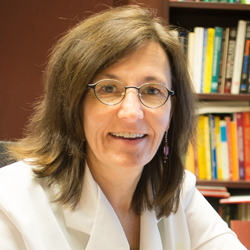
Basso began her postdoctoral work on 3D kinematics of locomotion after spinal cord injury in the lab of Michael Goldberger, PhD, at MCP, and later shifted her attention to creating locomotor assessments that capture features in animals that are also relevant in human walking. “[Previously] you couldn’t compare your outcomes to anybody else’s,” she says. “There was a lot of drift, even within an individual lab, because what ‘some movement’ meant to one person was different to somebody else.”
The BBB scale, while still using measurements scientists can see with the naked eye, defines terms such as “slight movement” (less than half the range of motion) and “occasional” (happening less than half the time a patient walks). “It still gets done in four minutes,” Basso says. “But now there’s more precision than there ever was before, and we can compare from lab to lab.” Today, Basso continues to use the BBB scale in her own work at the Ohio State University School of Health Rehabilitation Sciences, where she is director of research. Her labs focus on both the cellular and molecular mechanisms that promote — or stifle — recovery from spinal cord injury, and translational research around exercise and physical therapy.
Basso’s newest project, funded by the Department of Defense, will combine these interests within subacute spinal cord injury. Her lab will study patients’ cervical spinal fluid to determine when the spinal micro-environment is most conducive to physical therapy. In the study, one group of participants will immediately begin a treatment that combines treadmill training with functional electrical stimulation to excite targeted muscles. The other group will start later.
“We think if we can start as early as possible with combination interventions that induce neuroplasticity in the best cellular environment,” Basso says, “then we can get more recovery than we would at later times or with one therapy alone. We are trying to get more bang for our buck.” The study will mark the first time spinal cord injury researchers use biomarkers to determine the timing of rehabilitation therapy, Basso says. “We don’t know if it’ll work out,” she says. “It’s definitely a high risk. But being the first one to do all these things means that whatever we find is going to be important. That’s the motto in our lab. Even if we’re not successful, it will set the stage for something.”
Basso also sees advocacy as part of her mission as a spinal cord injury researcher. In 2018, she co-authored a paper in the Archives of Physical Medicine and Rehabilitation on the economic impact of activity-based rehabilitation for people with spinal cord injury. At the time, most U.S. health insurers covered just 21 physical therapy sessions per patient annually, Basso says.
But, the study found, when spinal cord injury patients were offered more therapy sessions, they continued to make significant new gains, especially in areas of bowel and bladder function, even at 120 sessions. These functional gains can help protect people with spinal cord injuries from dangerous infections and other side effects.
“We need insurance companies to pay for more therapy sessions earlier after spinal cord injury because it’s cheaper in the long run by preventing repeated hospitalizations,” Basso says. “To change insurance companies’ perspectives, it’s really going to take showing how much money can be saved.”
The Advocate
Lana Zholudeva’s passion for the people of the spinal cord injury field — both her colleagues and the patients she strives to serve — started when she was working toward her PhD in the lab of Michael Lane, PhD, associate professor of neurobiology and anatomy at Drexel. “He not only interacts with people with spinal cord injury, but he introduces his students to them and to the big-name scientists,” says Zholudeva, who earned her PhD in neuroscience from Drexel in 2018. “You become part of the community from early on.”
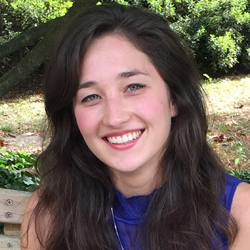
Zholudeva’s PhD project focused on V2a interneurons, spinal cells that play an important role in motor control. “There were lots of ways we could take the project,” she says. “For me, it’s coming back to that clinical perspective and seeing how we can make this discovery part of a therapy. Can we make these cells in vitro? We hypothesize that putting [V2as] back into the injured spinal cord will further enhance recovery.” The results from Zholudeva’s project suggested this technique contributed to increased recovery of the respiratory circuit, meaning some of the animal subjects breathed better.
When it came time to find a postdoctoral position, Zholudeva looked for an institution that would help her translate her PhD findings into, eventually, a treatment for people. She notes that such a shift from bench to bedside — and perhaps back again — is par for the course in spinal cord injury work. “This trajectory is flexible,” she says. “Whatever part of the translational pathway interests you, you’ll have a home in this field.”
Zholudeva found her new home at the Gladstone Institutes in San Francisco, where she works in a lab that studies V2a interneurons derived from human stem cells. “Rather than just answering the biological questions,” she says, “it’s going to put me closer to that clinical thought process. What is it about human stem cells that we need to consider when we’re trying to make cellular therapeutics?”
Zholudeva also continues to interact with patients directly, speaking recently at a virtual symposium held by the advocacy group Unite 2 Fight Paralysis. “The perspective from someone who has an injury is incredibly important,” she says. “It truly gives you this inspiration when you’re at the bench and your experiment isn’t working.”
As difficult as it can be to have these conversations, Zholudeva says she appreciates hearing the lived experiences. “I do think about the injured person, the person having trouble breathing or who can’t walk or do the simple things we often take for granted,” she says. “Anyone can have a spinal cord injury at any time. It’s not a genetic predisposition. It’s not something you can take a pill for or prevent… I hope whatever discoveries I make or contribute to ultimately do help people.”
Back to Top